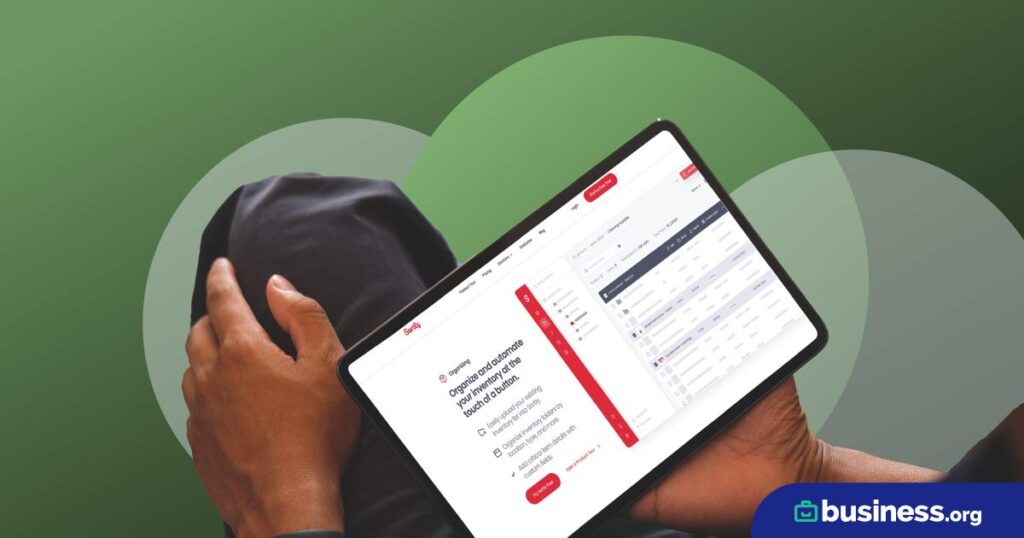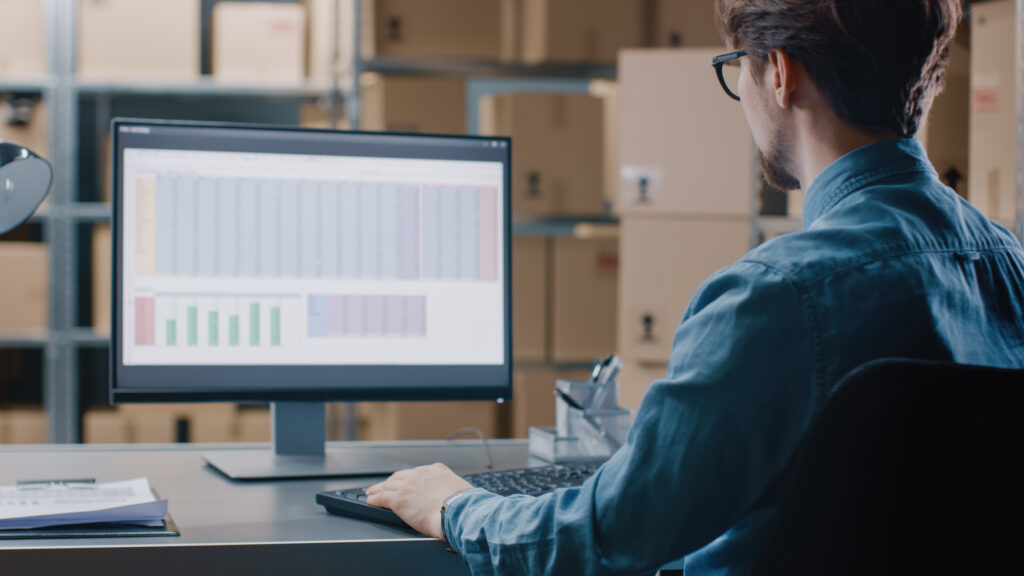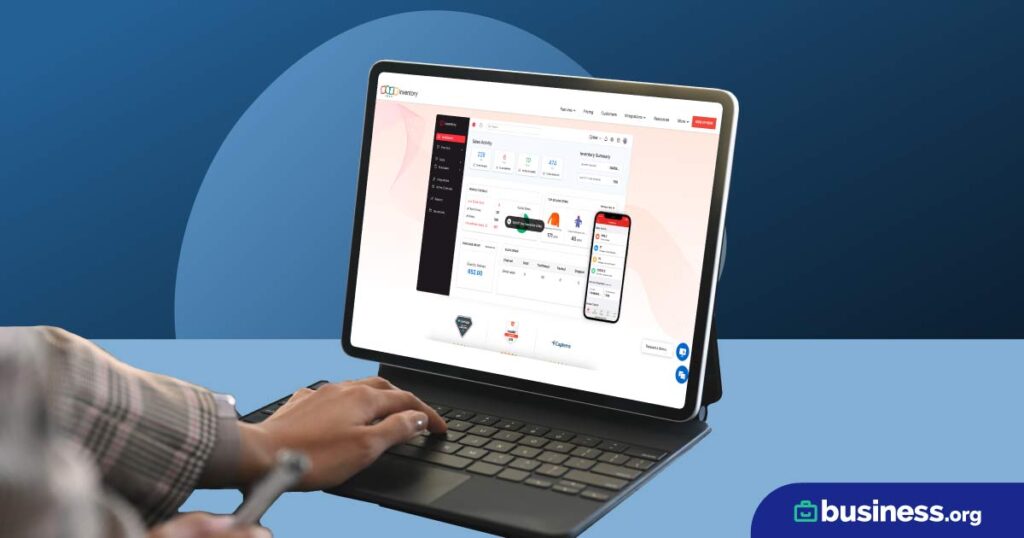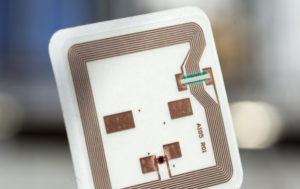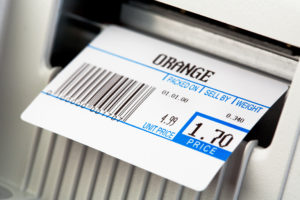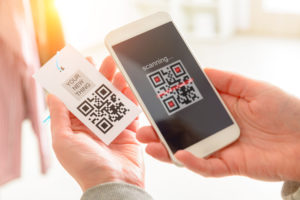We are committed to sharing unbiased reviews. Some of the links on our site are from our partners who compensate us. Read our editorial guidelines and advertising disclosure.
RFID Tags vs. Barcodes vs. QR Codes
One of the key benefits of inventory management software is the ability to track the movement and sale of your products in real time. But to do that, you’ll need to implement an effective tracking method.
Radio-frequency identification (or RFID), barcodes, and QR codes can all do the job, but each method has its own pros and cons. We’ve broken down the differences between each option below to help you choose the best solution for your company.
RFID tags vs. barcodes vs. QR codes
Everything you need to know about RFID tags
What is an RFID tag?
An RFID tag is a small tag that contains a microchip, wrapped in plastic or paper for protection. The microchip stores any and all data assigned to it (such as the weight, dimensions, and manufacturing costs of the product it’s placed on).
In order to read an RFID tag, you need a special scanner with near field communication (NFC) capabilities. RFID scanners activate the microchip in the RFID tag using radio waves. And since all the product data is stored on the microchip (instead of an online database), you can access all the information you need without ever having to connect to the internet.
Because RFID tags and scanners use radiofrequency, they can potentially save business owners a lot of time and money. For starters, RFID scanners can read multiple RFID tags at once—even from a distance, and even when the tag is obscured by a wall or box. You can also scan them from any direction, so warehouse employees don’t have to spend extra time getting each box right side up before they can scan it.
The downside, though, is that RFID tags are more expensive than barcodes or QR codes. And since most cell phones don’t come with NFC capabilities, you have to invest extra money in RFID scanners—no using employees’ smartphones.
RFID tags can also be a bit unpredictable. Because they have microchips in them, they’re vulnerable to hacking from malicious parties who want to steal your product information. They can also be unreliable if used in close proximity to a magnet, liquid, or certain types of metal, so they won’t be a great pick for all types of products.
Who should use RFID tags
If your warehouse processes a large number of items every day, it may be tedious to manually scan in each item every time it’s moved. Instead, you can install RFID scanners at strategic points throughout your warehouse, where they can scan products in bulk automatically as the product is moved. This solution reduces human error in your system and saves your employees time—helping your staff process more items and orders per day.
Granted, a robust RFID-based system is expensive. But if your warehouse handles a high volume of products, the efficiency boost of an RFID system could be well worth the extra cost.
By signing up I agree to the Terms of Use and Privacy Policy.
Everything you need to know about barcodes
What is a barcode?
If you’ve ever used the self-checkout line at the grocery store, you’re probably familiar with scanning barcodes. Barcodes are a series of black and white bars that contain encoded data—usually a universal product code, a stock-keeping unit number, or both.
Barcode scanners are able to pull these numbers from the barcode, then cross-reference that number with your inventory database to pull up product information (weight, color, size, date purchased, etc.).
What you may not know, though, is there are multiple types of barcodes. One-dimensional (or 1D) barcodes use the familiar rectangular block of black and white stripes, but even among 1D barcodes, there are multiple encoding methods (e.g., UPC-A, UPC-E, UPC-2). Then there are two-dimensional (2D) barcodes, which are pixelated squares similar to QR codes.
Regardless of the type of barcode your business uses, barcodes are cheap and easy to create. Barcode scanners are likewise cheap, and with barcode scanners now available on most iOS and Android devices, you can implement a barcode system without investing a lot up front in hardware. And tracking items by barcode is certainly a lot faster and more accurate than tracking product by hand.
That being said, barcodes have some drawbacks. Barcodes are basically like license plates on a car—they don’t explicitly contain any information about the vehicle or the owner of the car. Instead, those details are maintained in a database, which you can reference any time you need to when you scan the barcode.
In inventory management terms, that means you won’t be able to pull up product data by scanning the product’s barcode unless you’re able to connect to your inventory management database. That’s problematic if your warehouse has notoriously bad Wi-Fi, for instance.
And then there’s the fact that barcodes can be a bit temperamental. If the barcode tag isn’t perfectly flat or scanned at precisely the right angle, your barcode scanner may not be able to read the barcode—problematic if your warehouse staff are in a rush.
Who should use barcodes
Because barcodes and barcode scanners are relatively inexpensive and easy to implement, they present less of a barrier to entry, which is why we recommend barcodes for most businesses on a budget. They may also be an attractive option for companies that are just starting to move away from tracking inventory by hand.
We also recommend barcodes for brick-and-mortar retail businesses. While few to no point-of-sale (POS) systems offer RFID or QR scanners, barcode scanners are readily available (and sometimes even included with your service). So a barcode system might be the best way to sync your product sales to your inventory management system.
Everything you need to know about QR codes
What is a QR code?
Quick response codes (or QR codes) are a type of 2D barcode. They are square, printed codes made up of tiny, pixelated black and white squares.
QR codes are capable of communicating far more complex data than barcodes. These codes can direct the user’s device to a certain website or app. They can also contain the binary code for a complex picture, and they can accommodate up to 4,296 characters of text.
Because QR codes are printed, they are just as easy and cheap to create as barcodes. However, they have a much lower rate of error, since only 30% of a QR code must be intact in order for the scan to be successful. So while a single wrinkle in a barcode can prevent a scanner from reading the code, a QR tag could be very badly damaged while still being perfectly readable.
The downside? QR codes aren’t often used in the US (despite being heavily used elsewhere), so POS systems with compatible QR scanners are rare—and those that exist are usually much more expensive.
Who should use QR codes
In some cases, a business may want to track more complex data on each of their products. In that case, a QR code system may be perfect, since the codes can store everything from product page links to image links of the product at its last known location.
QR codes may also be beneficial if you work heavily with manufacturers and suppliers in China, Taiwan, and other Asian nations (where QR codes are much more common and heavily used than in the US). Using the same tags may facilitate better communication between you and your vendors, leading to fewer products falling through the cracks.
Finally, QR codes may be best for business owners whose product tags often get damaged or ruined in transit. With QR codes, you won’t have to worry so much about scuffing, tearing, wrinkling, or water damage affecting your ability to scan in your inventory.
The takeaway
RFID tags, barcodes, and QR codes each have their own advantages and disadvantages when it comes to managing your inventory. RFID tags can be used to create fast (albeit expensive) inventory tracking systems that free up your warehouse employees’ time for more pressing tasks. Barcodes are inexpensive and widely used, so they’re easy to implement with a minimal up-front cost. And QR codes allow for complex data storage with fewer reading errors.
Inventory tracking means nothing if you don’t have a robust inventory management software to keep tabs on things. Check out your options with our guide to the best inventory management software.
Disclaimer
At Business.org, our research is meant to offer general product and service recommendations. We don't guarantee that our suggestions will work best for each individual or business, so consider your unique needs when choosing products and services.
